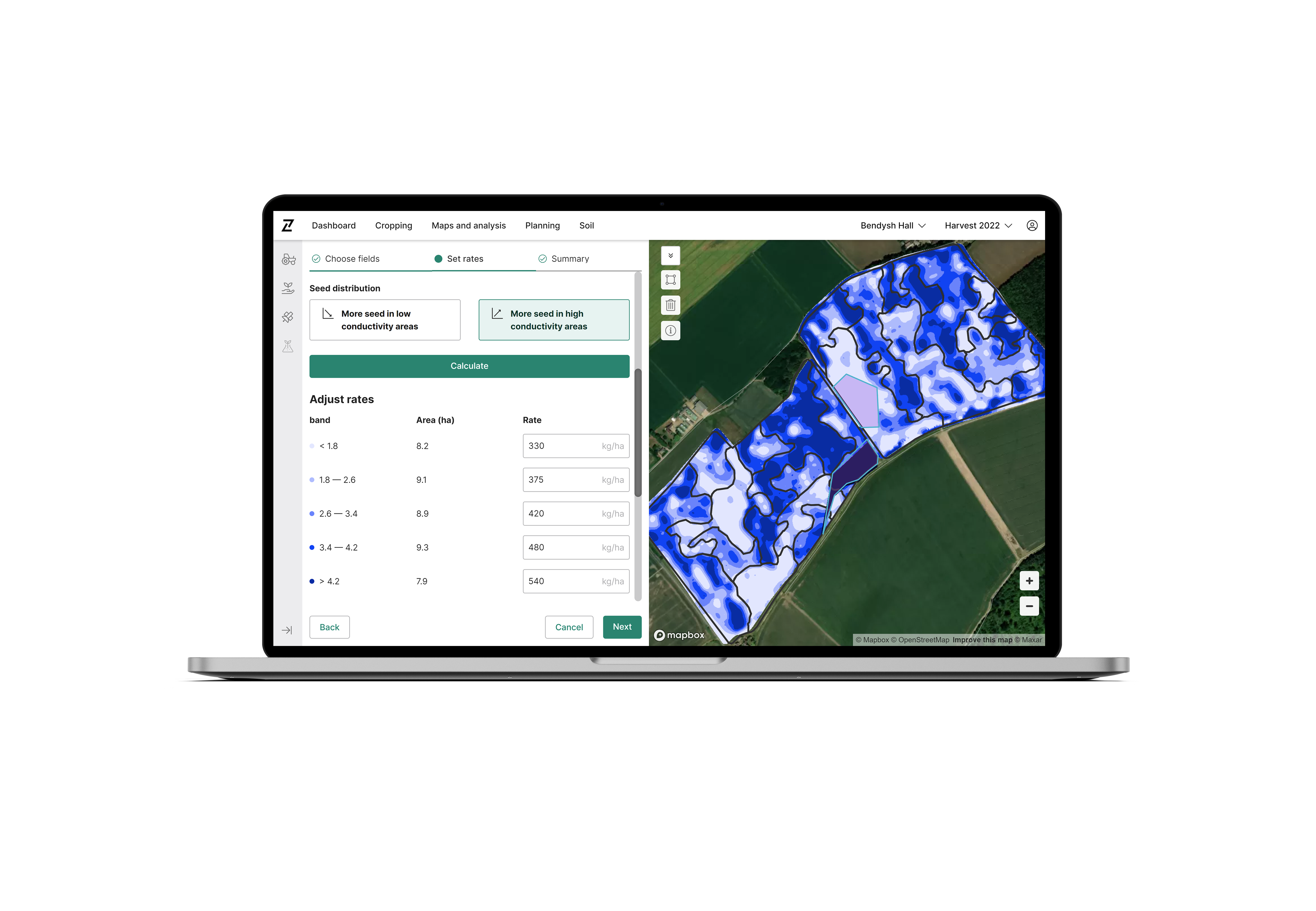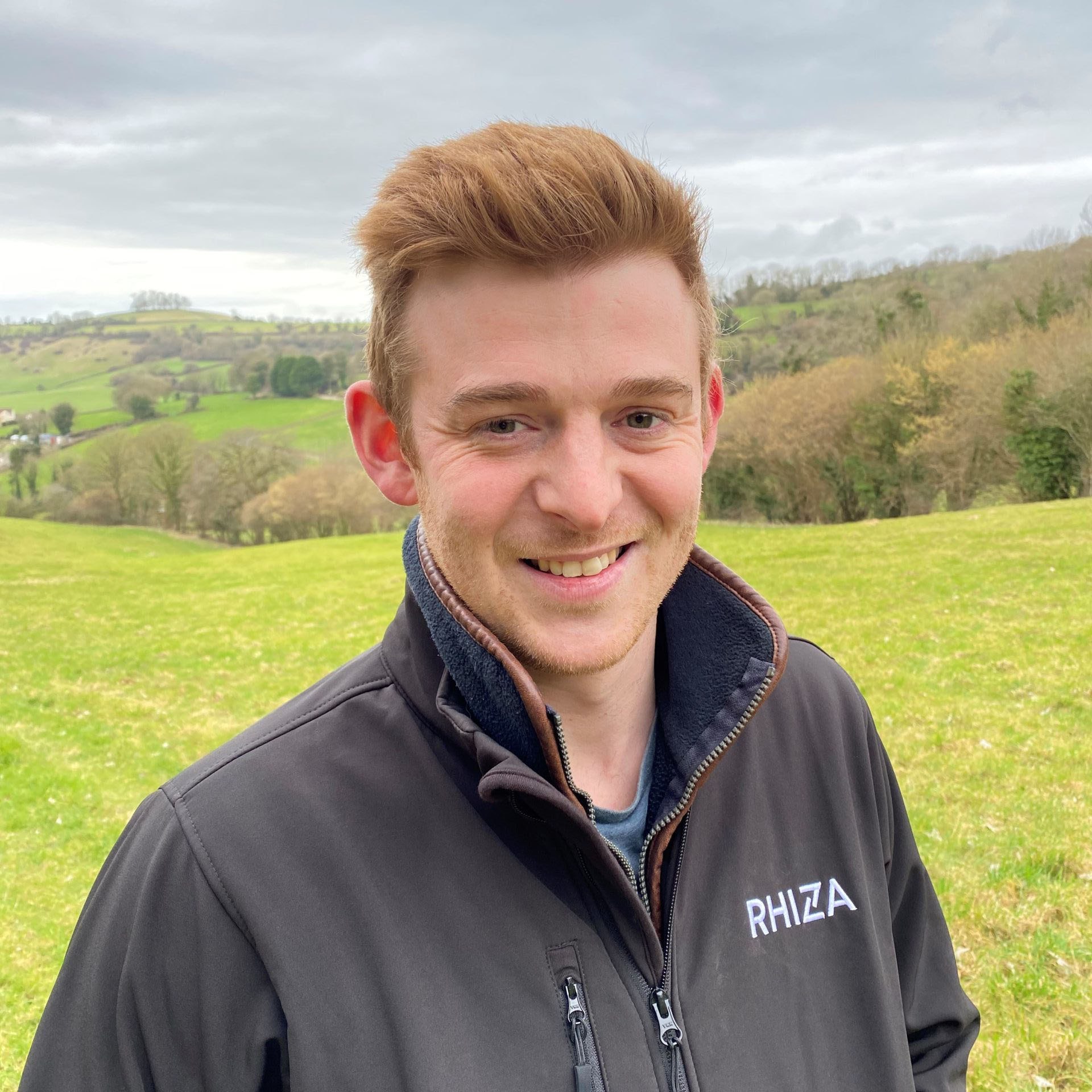Set your crop up right with variable rate seed plans this Autumn
07
AUGUST, 2022
Blog
With harvest in full swing, thoughts are starting to move towards planning for autumn drilling and preparing variable rate seed plans.
Variable rate drilling is the first step in the 2023 harvest season, where we have the opportunity to vary seed rates to suit each field and farm situation, using either EC soil zone data or past and current imagery.
The extremely warm and dry conditions we have experienced throughout June and July has seen crops senesce quicker than we would usually expect, particularly on the lighter land and chalk soils. I have been working with growers to review these areas throughout the season using both NDVI (vegetation), and GCVI (chlorophyll) imagery in Contour to identify areas where we can consider varying seed rates in the following crop. Frequent satellite imagery through ClearSky is providing us with the most up to date in-field information on how soils are performing in the current weather conditions, subsequently aiding the early decision-making process in relation to seed rates. The image-based planning module in Contour provides opportunities for those growers that have not varied seed applications before and is a great entry level to making adjustments in seed rates using back-dated and current imagery to identify patterns across each field.
Identifying the areas in a field is the first step in creating a variable rate plan, we can then decide on how much we want to vary rates by. Working across the southern region and the Cotswolds I look after large areas of shallow soils or with high stone content, so generally my growers and I look to vary rates at anywhere between 10-35% and in some cases this may be slightly more or less. By using Contour to create these plans we can decide on whether to increase or decrease seed rates depending on soil conductivity or NDVI/GCVI data. However, there may be areas in a field that do not fit within either of these perimeters and we can therefore use the polygon tool to make manual adjustments. The polygon tool is also used in areas that we know may need to be altered in contrast to the soil information, for example in areas of excessive grazing around woodland, or high traffic headlands, we will increase seed rate to help mitigate the potential issues. With the new functionality in the Contour platform, observations and polygons from previous seasons can be used to influence the seed plans for the coming year.
In general, my growers and I are creating plans to drill the crop in such a way that we can expect a more even establishment, and produce a homogenous crop going into the winter months. However, this is not the only way we produce plans and we can consider targeting certain areas, whether that be pushing for yield on better soils, or reducing inputs on poorer areas. With the current volatility in the market, creating variable rate seed plans is providing my growers with the option to tailor plans to optimise the output and gross margin on each hectare across the farm. By doing this early it has also meant that we are able to calculate field and crop seed totals, therefore giving an indication on how much seed to purchased, or bulk adjusting plans to ensure we are using all the seed available.

Image-based seed plans in the Contour platform.
For more information on variable rate seed planning and how to get the most from your fields, contact your local RHIZA Crop Input Specialist.

